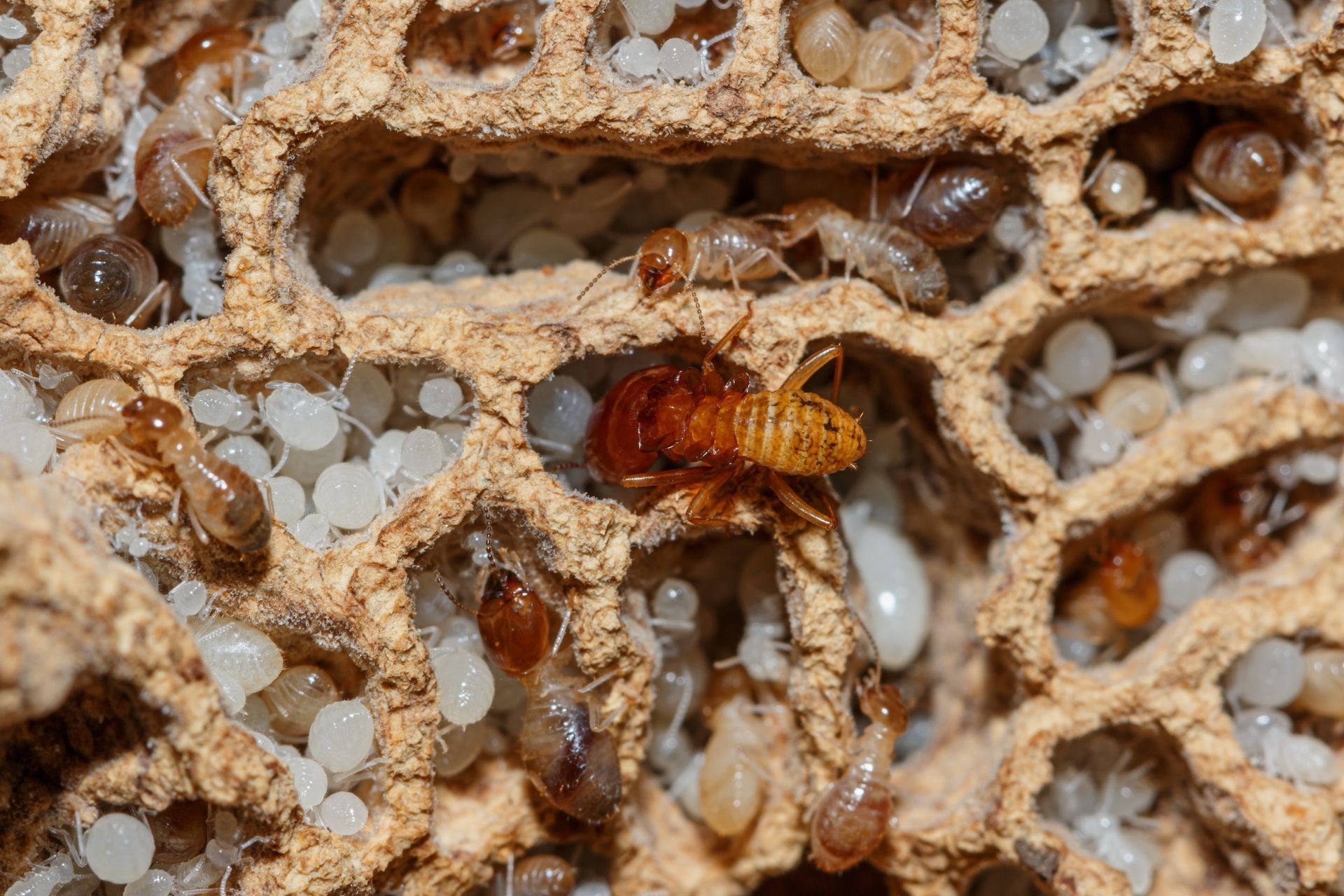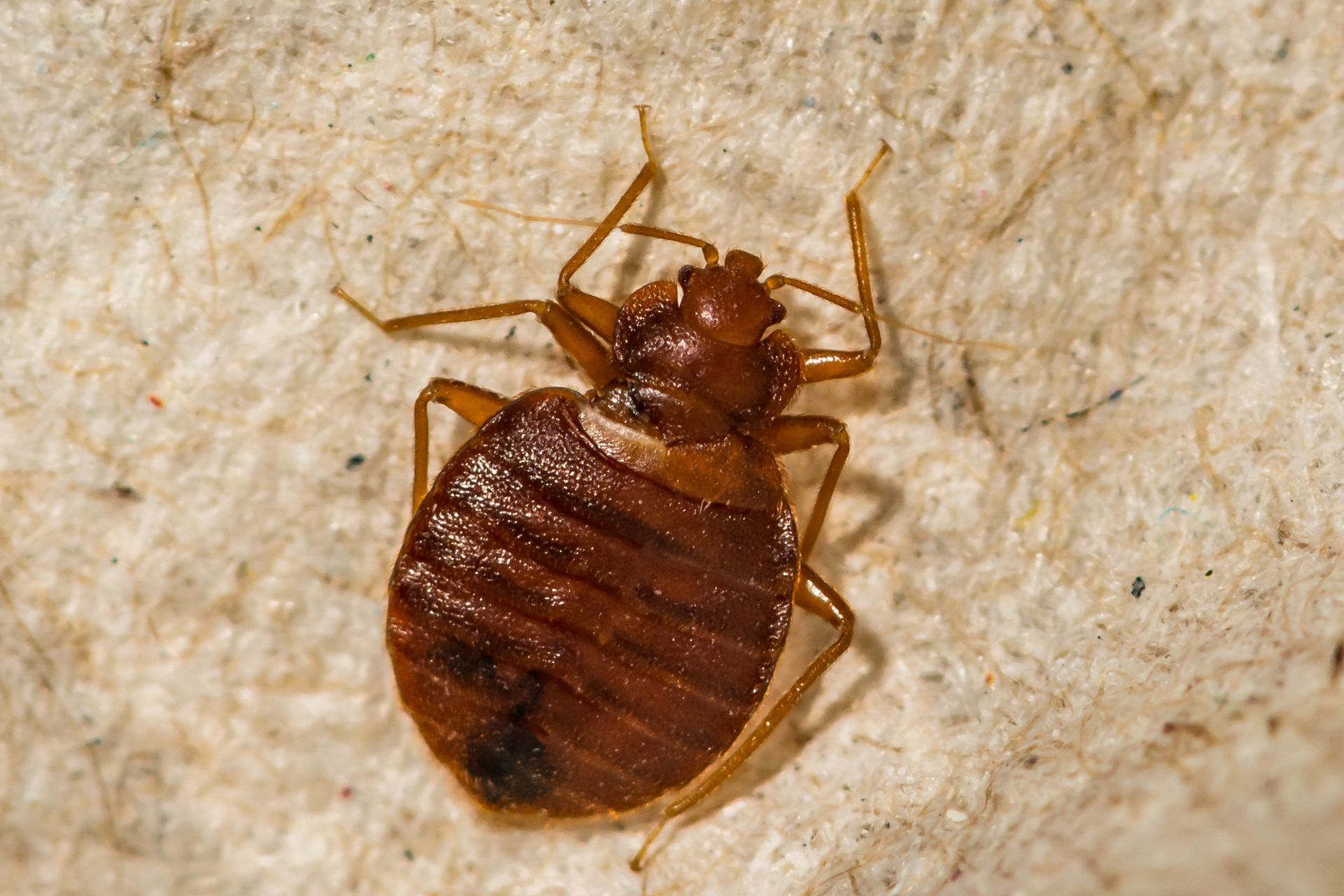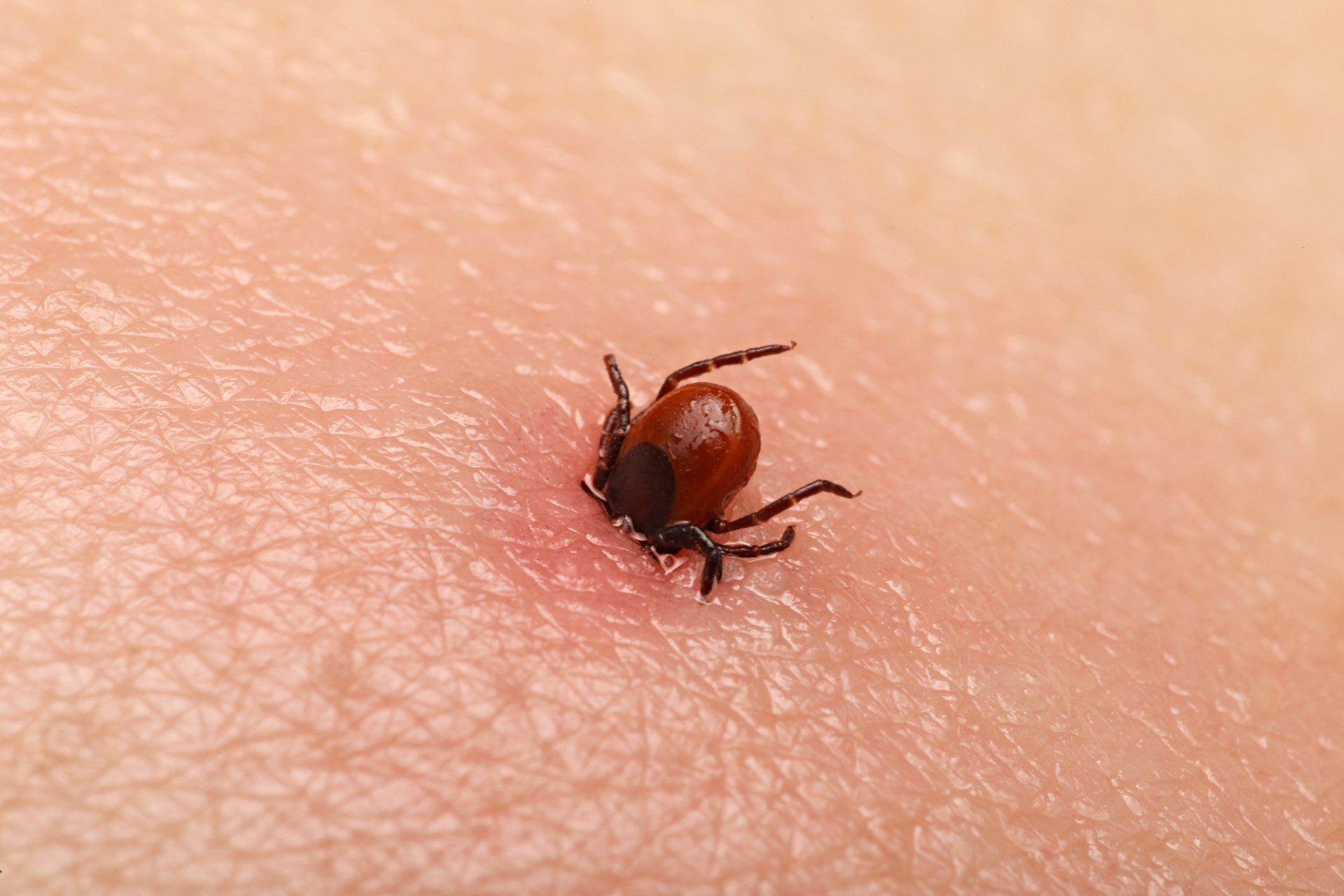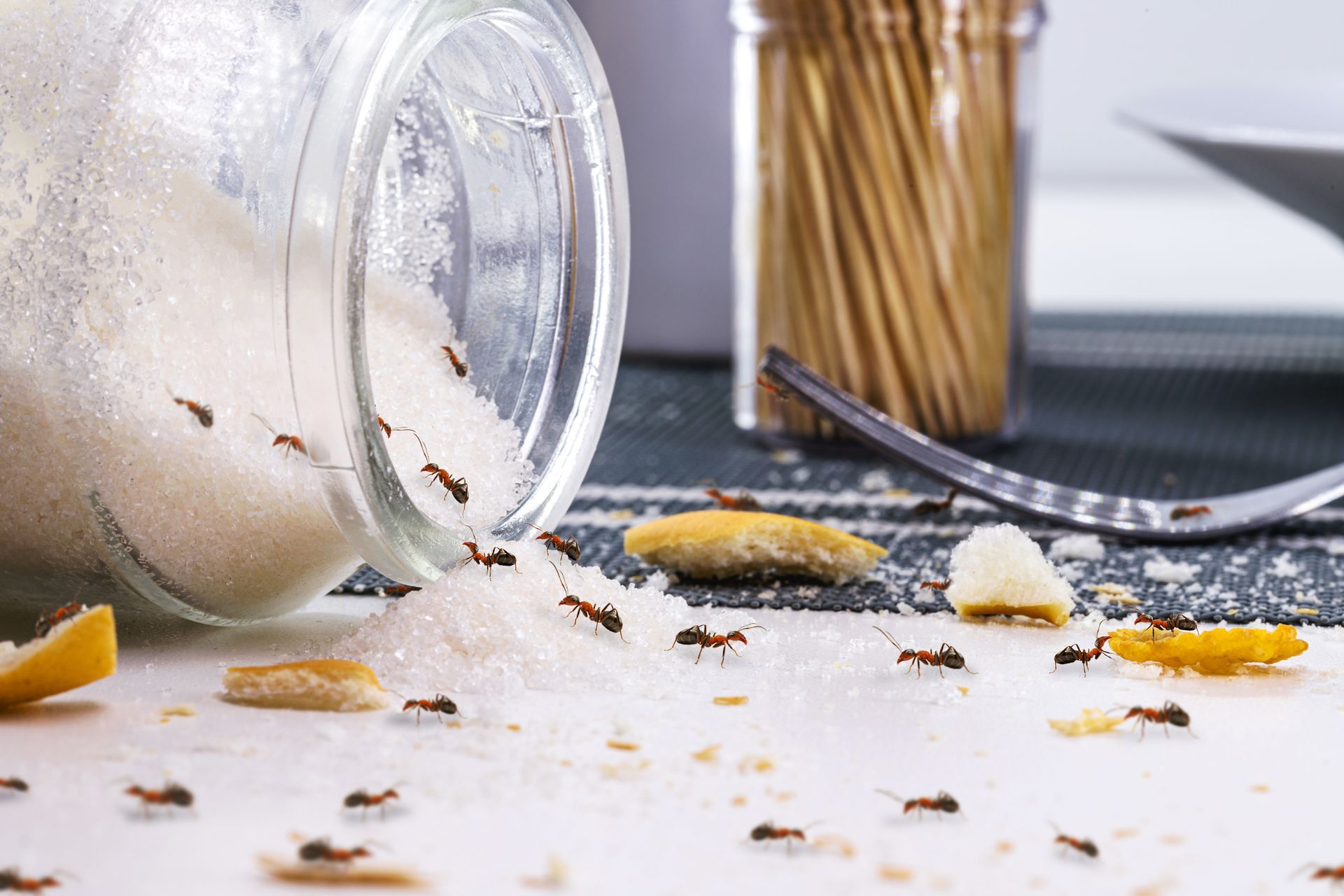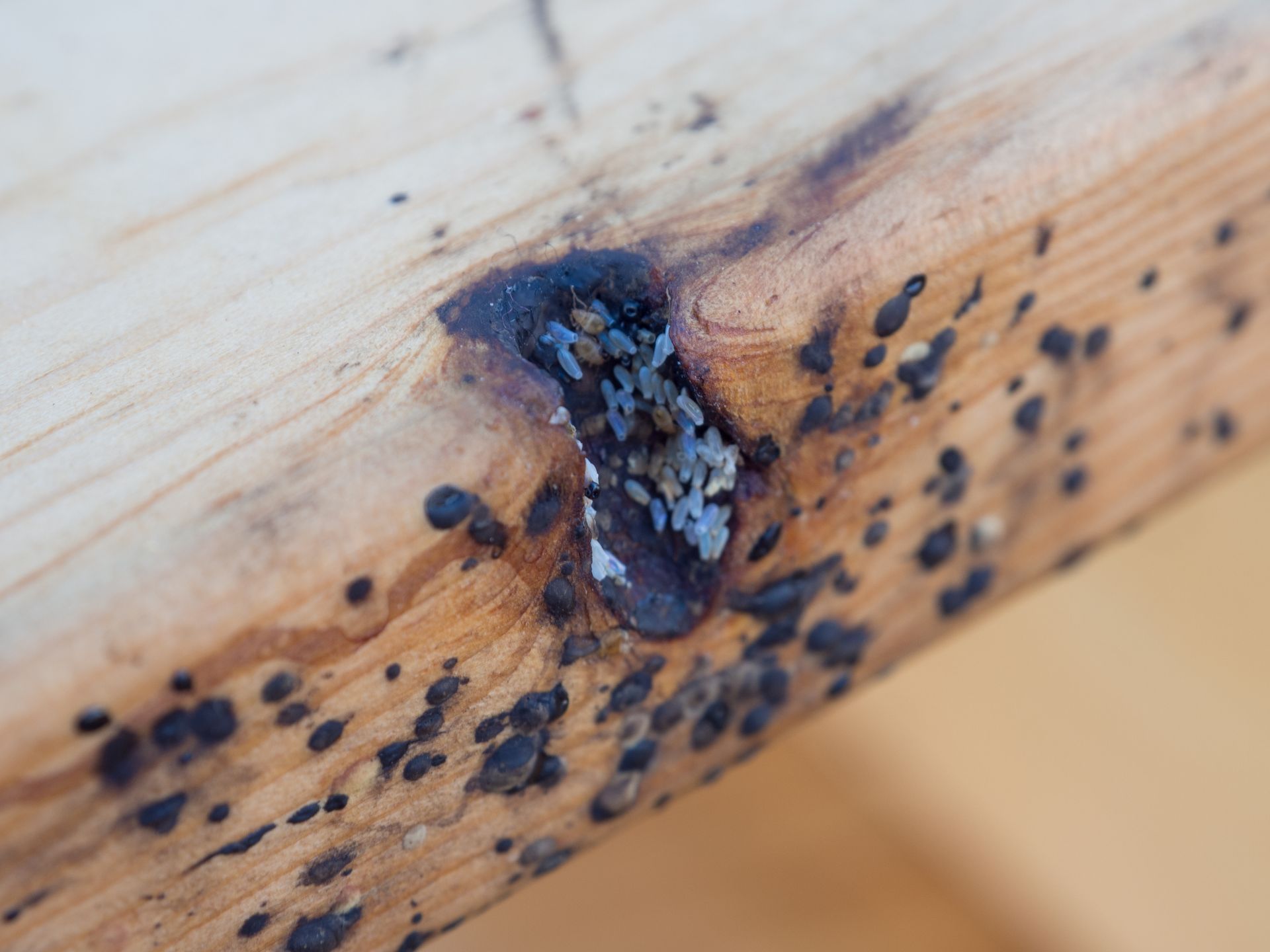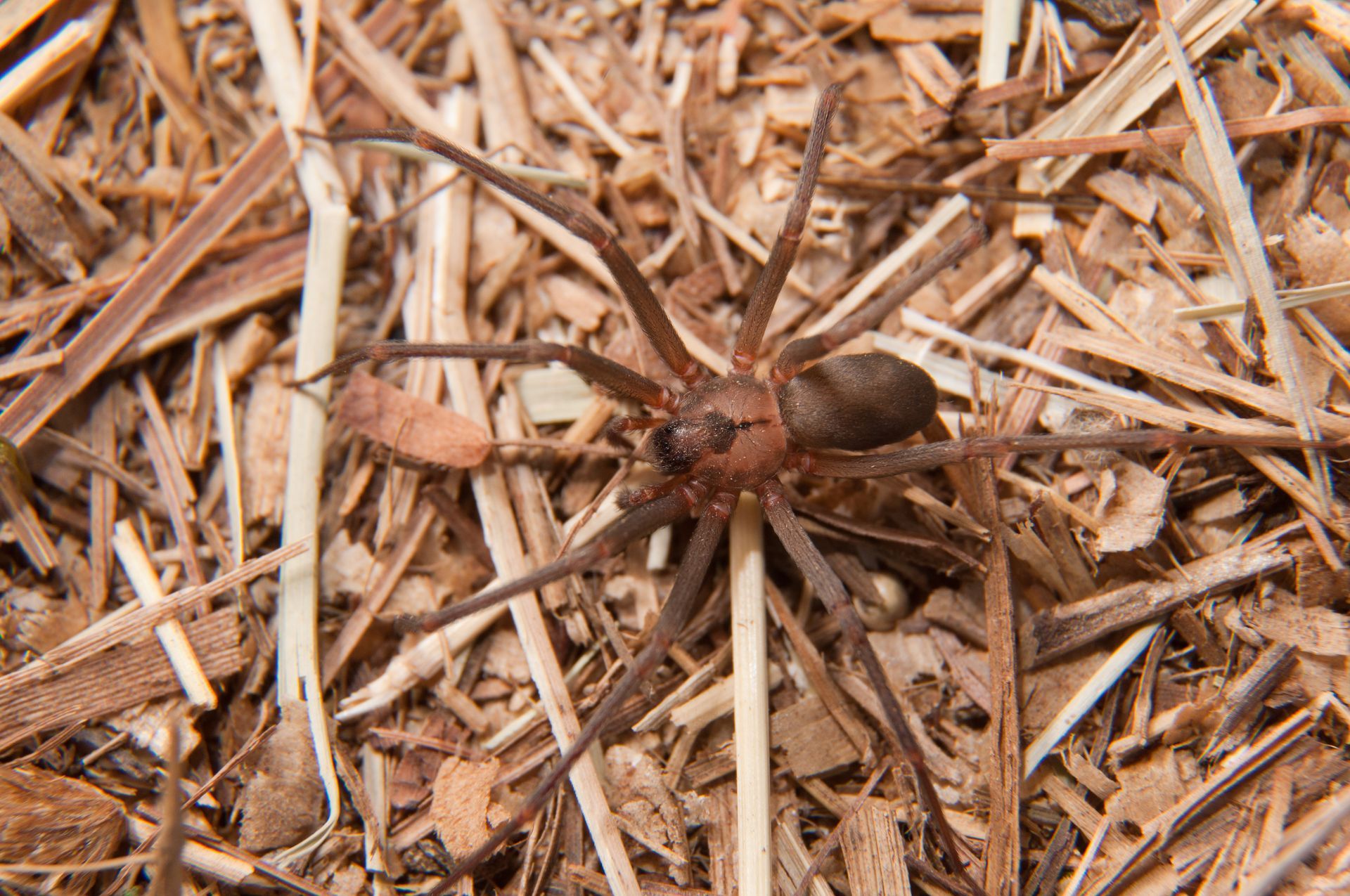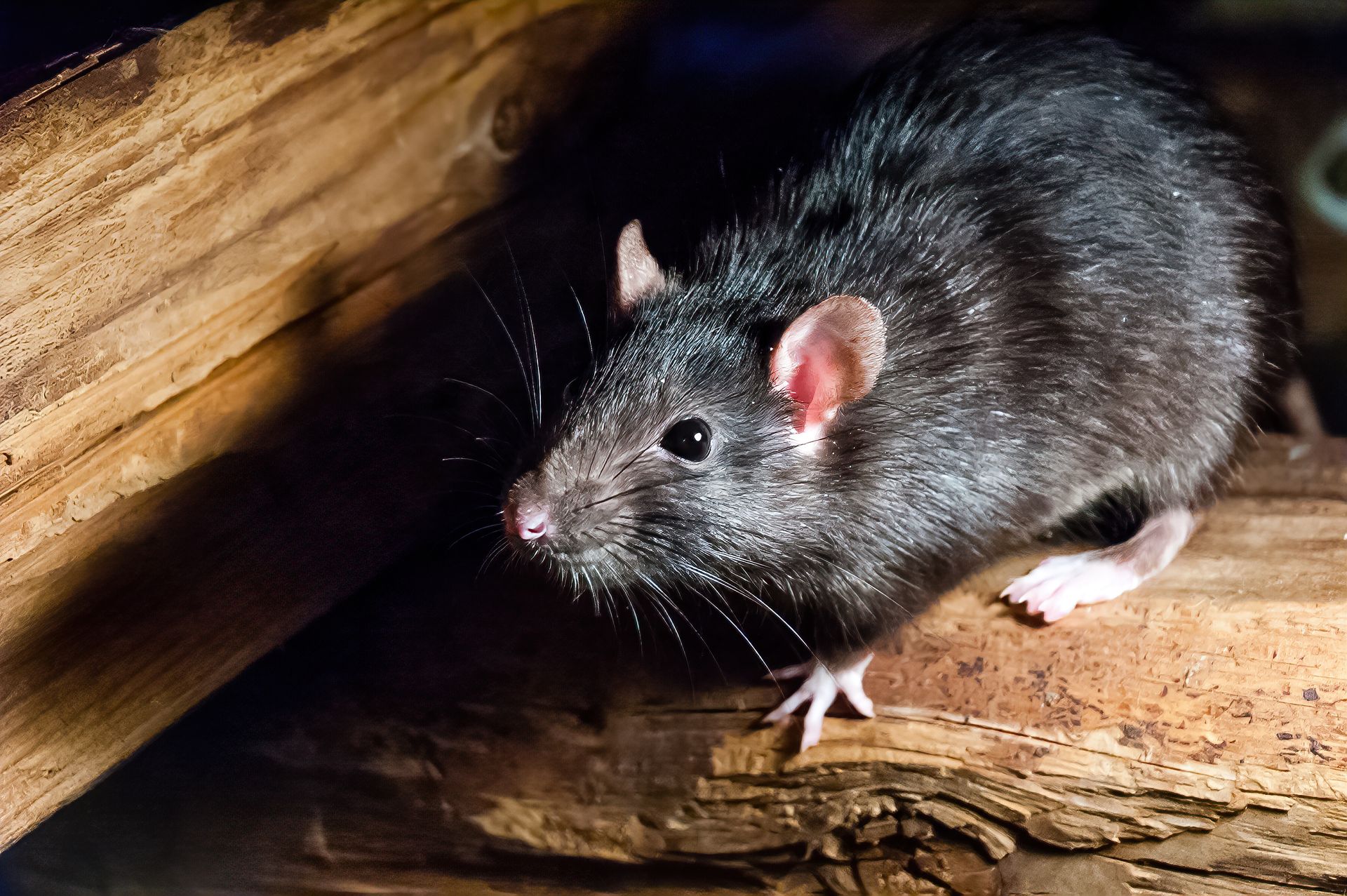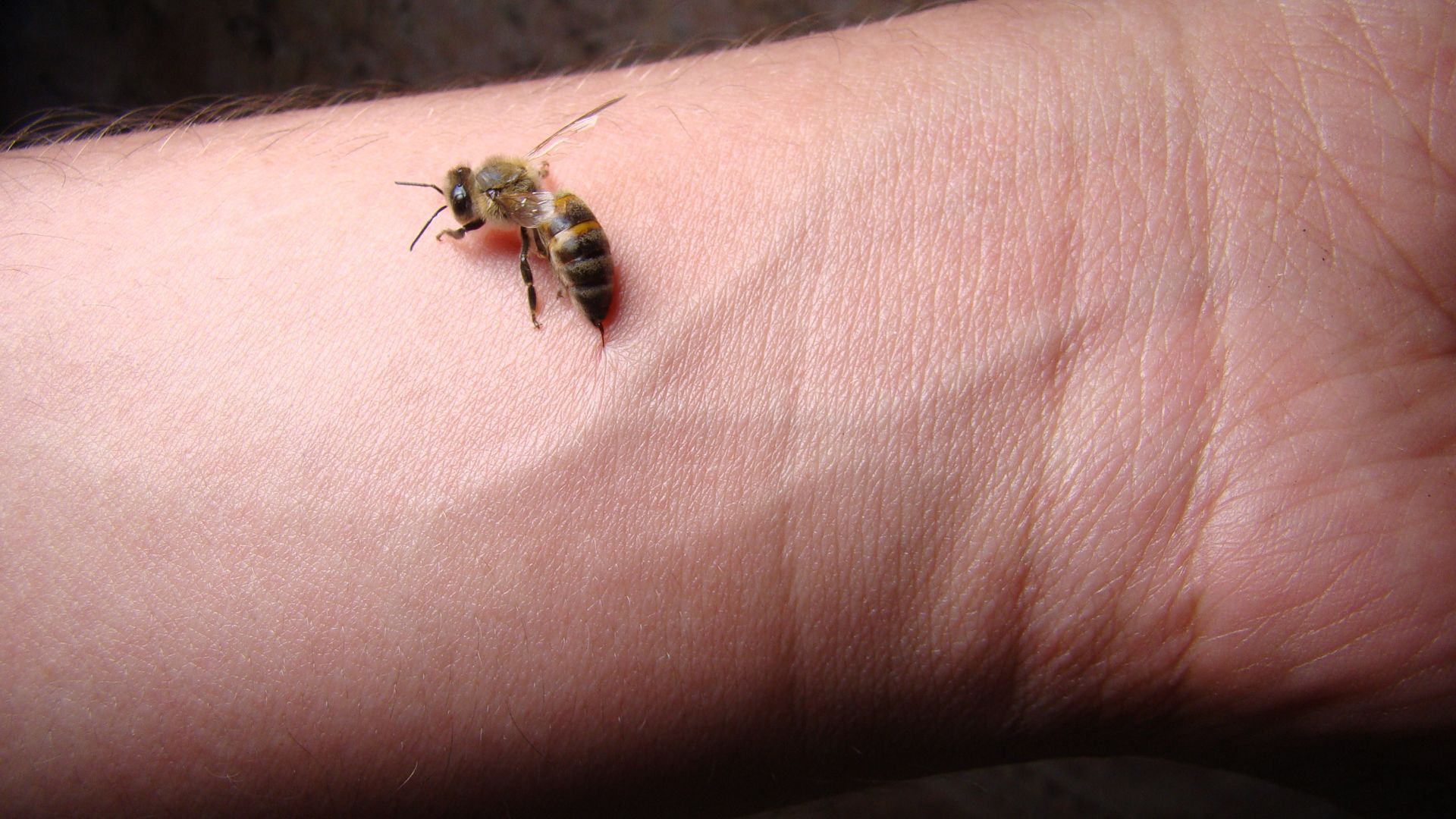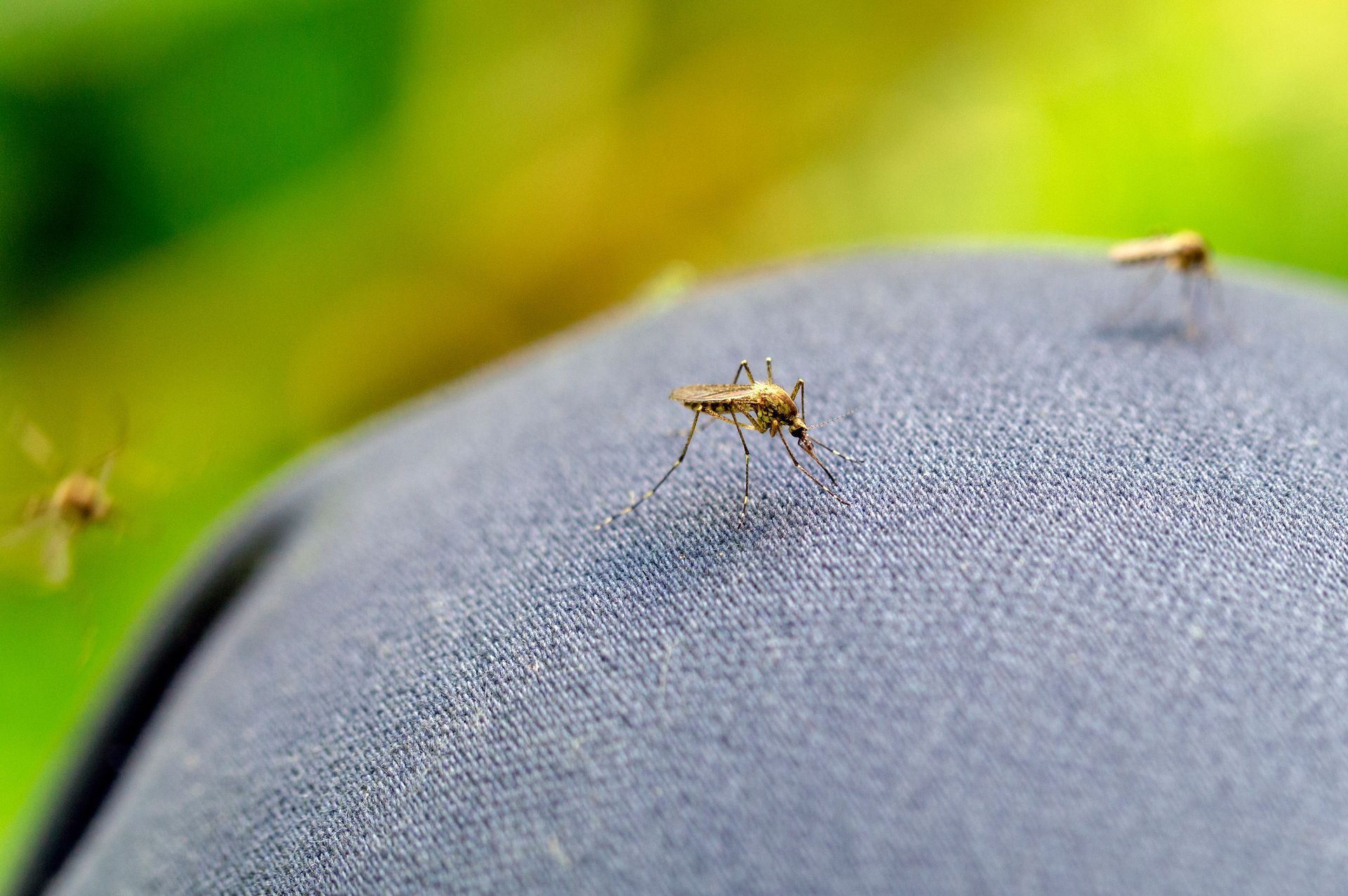Difference Between Wasps, Hornets, Bees, & Yellow Jackets
Stinging Pest Similarities & Differences

| Traits | Wasp | Hornet | Bee | Yellow Jacket |
|---|---|---|---|---|
| Aggressiveness & Danger | More aggressive than bees. Can sting multiple times; Will swarm; Can cause allergic reaction | Most aggressive of the wasps; Can sting multiple times; Will swarm; Can cause allergic reaction | Gentle unless threatened; Dies after stinging and can only sting once; Will swarm; Can cause allergic reaction | More aggressive than wasps; Can sting multiple times; Will swarm; Can cause allergic reactions |
| Feeding Habits | Predators & scavengers | Predators & scavengers | Pollinators | Predators & scavengers |
| Identification | Long w/ a thin pinched body; Often bright striped colors w/ bright antenna; 2 wings and dangling legs | Similar to wasps but darker in colors; Thicker bodies; 2 sets of wings | Mid-sized w/ a more robust and hairy body; Often bright yellow and black with a striped pattern; 2 wings and dangling legs | Short w/ a thicker body; Usually yellow striped or mottled w/ dark brown or black; Dark antenna; 2 wings and tucked legs |
| Characteristics | Wasps vary greatly depending on species | Aggressive w/ large nests; Predatory behavior towards other target prey insects | Non-aggressive; Don’t prey on other insects | Generally scavenging for sweets and proteins; Will also target other target prey insects. |
| Social or Solitary | Both; Depending on species | Social | Social | Social |
| What is it | Stinging flying insect; pollinator | Stinging flying insect in wasp family; pollinator | Stinging flying insect; pollinator | Stinging flying insect in wasp family; pollinator |
| Family | Vespidae | Vespidae | Apidae | Vespidae |
| Prey | Varies from nectar / fruit to insects | Primarily feeds on other insects but will scavenge when needed | Feeds on pollen | Scavenges for trash as well as targets other prey insects |
| Nesting | Solitary wasps don’t nest; Social wasps can nest inside or outside if the locations remain undisturbed | Nest is usually outside found in trees, shrubs, or rotting wood. Nests can also be found closer to home, under decks and eaves; Generally made from wood cellulose | Hives can be built in just about any inside or outside environment. They have been found in tree stumps, wall cavities, and sheds. Made from bee’s wax which forms geometric honeycomb cells | Most nests are found underground or in tree stumps with a difficult to find entrance; In rare occasions, yellow jackets will nest in wall cavities. |
| Eggs | Eggs are laid in a nest or the body of other insect hosts or close by sources of food | Eggs are laid and incubated in a nest and taken care of until maturity | Eggs are laid and incubated in a hive and taken care of until maturity | Eggs are laid and incubated in a hive and taken care of until maturity |
| Notable Species | Spider wasp, mud dauber, digger wasps, yellow jackets, paper wasps | Asian giant hornet, Japanese hornet, European hornet, bald faced hornet | Honeybees, bumble bees, carpenter bees, Africanized honeybees | Western yellow jacket, Eastern yellow jacket, German yellow jacket |
Key Difference Between Wasp vs Hornets vs Yellow Jackets
Hornets vs wasps are often mistaken for each other which makes sense since hornets are a specific type of wasp. This means that all hornets are wasps but not all wasps are hornets. Hornets are generally some of the largest species of wasps and are easily identified if you know what to look for. They tend to look like wasps but are slightly thicker in the body and head and are often slightly darker in color. Yellow jackets are also classified as wasps. They tend to be smaller and brighter than their wasp and hornet cousins.
What are Bees?
Bees are black and yellow flying insects who are typically gentle creatures out in search of nectar and pollen to return to the hive with. As pollinators, bees play a crucial role in all ecosystems as they ensure that plants are able to continue with their reproductive cycle. While capable of stinging, these bugs will only use their stinger to protect the hive. This is because bees must sacrifice themselves since their barbed stingers get ripped from their bodies after use. They tend to be shorter and fatter than the other stinging bugs and also appear to be hairy.
What are Wasps?
Wasps are another stinging pest that plays a crucial role as pollinators and as beneficial pest control against damaging bugs like caterpillars, thrips, and greenflies. These bugs are aggressive and territorial and can be either social or solitary bugs depending on the species. Of all the stinging bugs, wasps are some of the only species to lay eggs inside other host insects for their larvae to consume.
What are Hornets?
Hornets are some of the largest wasp species. They also act as pollinators and provide beneficial pest control against damaging bugs. They are known to be the most aggressive of the wasp species and may potentially swarm anything that comes too close to their nest.
What are Yellow Jackets?
Yellow jackets are another common species of wasps. They are generally bright yellow and are one of the few stinging pests that nest in the ground. They will act aggressively if disturbed which can happen if someone steps on a yellow jacket nest on accident.
Differences in Appearance
List of Services
-
BeeBee Control List Item 1
Bees typically have wider, hairier bodies and legs. Their bodies have more pronounced striping and duller or darker yellows. Their wings are shorter and wider and about the length of their body. Different types of bees have unique characteristics which can make them confusing. For example, the bumble bee has a heavier body and carpenter bees can appear black or brown.
-
WaspWasp Control List Item 2
Wasps bodies will generally pinch off in the center and have longer brighter legs. Their bodies will have brighter yellows and more of a patterned appearance. Their wings are narrow and taper back and are longer than their bodies.
-
HornetHornet Control List Item 3
These bugs look like wasps but are generally a little bit bigger in size and come in a much broader variety of colors. They are rounder and fatter than most wasps with a wider head.
Differences in Diet
Bees are vegetarians who eat nectar and pollen and other sweet fluids. Honeybees will bring nectar and pollen back to the hive to feed the queen and larvae. Wasps are omnivorous predators who will feed on smaller nuisance pests and scavenge for food. Some wasps will lay eggs inside of insects and plants which provide their larvae with a source of food to feed on until they reach maturity. Hornets are also omnivores who eat everything from sap, to bugs, to trash. You can usually find all 3 circling around picnics where there are sweet drinks and left-over food to attract them.
Differences in Defenses
Understanding how and why bees and wasps protect themselves helps to reduce the chances of a negative interaction with a swarm of stinging pests. These bugs are armed with stingers that can cause allergic reactions and some can also bite.
Bees: Honeybees are normally very gentle and will not cause any problems unless they feel their queen is threatened. Their stingers are barbed and will get stuck in its target to ensure that the venom continues to be injected. This does cause the stinger to be ripped out of the bee, causing the bee to die. This action may also release pheromones that bees recognize as a threat signal to become more agitated and aggressive.
Wasps: Most wasps can sting multiple times and bite you. Unlike bees, the stinger is smooth and can be used repeatedly without causing the wasp to die. That said, they will generally only attack when threatened.
Hornets: Hornets are usually the most aggressive of the stinging pests. Their stingers can also be used several times without consequence to the hornet and they will attack without provocation.
Differences in Life Cycles
Each of the stinging pests follow the same life cycle steps. Starting with eggs before hatching into larvae and then maturing into pupae before becoming adults. Egg fertilization determines if an insect will become a female or male. Eggs typically hatch with a source of food ready to consume and will spend the season reaching the pre-pupal stage. Eventually the pupae will mature into a functional worker and leave the nest to help support the queen grow the nest.
Differences in Nests
Bees tend to nest in hives that are made with wax to hold the honey they produce. Depending on the species of bee, they will nest in trees, underground, in walls, and use the waxy secretion to line any area they determine to be home. The was forms honeycomb structures that are used to contain valuable honey as well as eggs and larvae. During the winter, queens will lay enough eggs to form a new colony which will hatch and mature the following year. Carpenter bees and bumble bees create nests in unique ways with carpenters forming caverns in wooden structures like termites and with bumble bees nesting underground.
Wasp nesting patterns are largely dependent on if they are social or solitary wasps. Solitary wasps only need a small space to find an undisturbed area to raise their broods. The location of a social wasp’s nest is largely dependent on the species. They live in large colonies that emerge in spring and then spend all year expanding their nest. This closes at the end of every year when the colony dies, and the queen hibernates until the cycle restarts in spring.
Stinging Pest Problems? Call EcoGuard Pest Management!
If there are signs of stinging pest activity, we recommend calling EcoGuard to come provide expert assistance to ensure the safety and security of yourself and your family. Our licensed wasp and hornet exterminators can help remove nests and beehives. Our technicians are standing by to schedule an inspection so we can get you a free estimate.
Request A Free Estimate
We will get back to you as soon as possible
Please try again later
Immediate Service Available
Services
Customer Care
Legal
Working hours
- Mon - Sun
- -
All Rights Reserved | EcoGuard Pest Management | All Phone Calls Recorded | By Using Website You Agree To Terms Of Use



